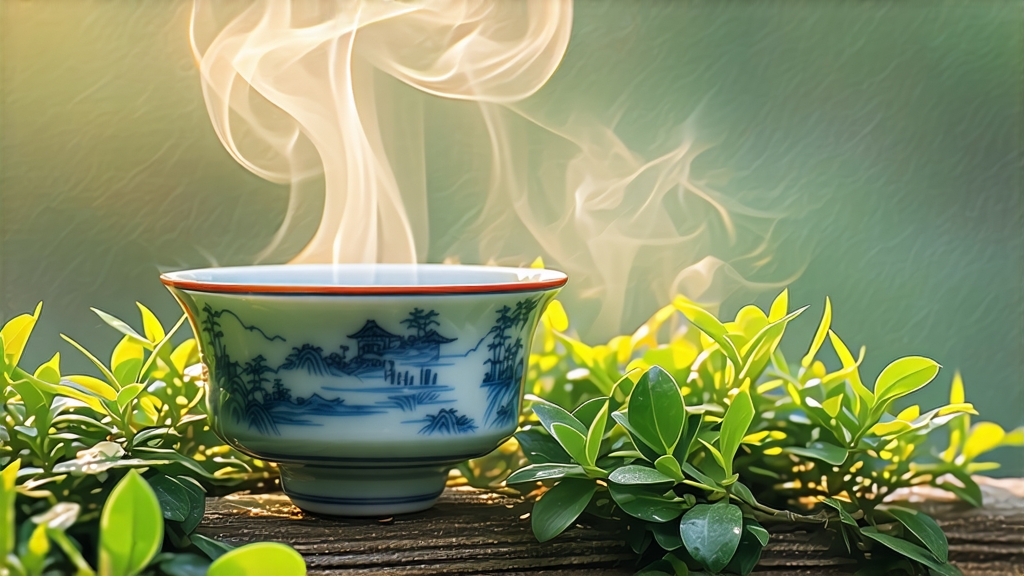
Floating above the Tropic of Cancer, the Alishan mountain range rises like a green spine through central Taiwan. Between 1,000 and 1,400 metres, where morning clouds still cling to cedar and cypress, the tea gardens begin. Here, in a perpetual spring of 18-24 °C, Alishan High-Mountain Oolong (阿里山高山烏龍) finds its voice—delicate, milky, orchid-sweet, and unmistakably alpine.
-
From Frontier Bush to Global Icon
Oolong itself was born on the Chinese mainland during the Ming-Qing transition, but Alishan’s story starts in 1855, when Lin Feng-chi carried 36 Qingxin (Green Heart) seedlings from Wuyi to Taiwan. The cultivar thrived in the island’s cool interior, yet it was not until 1980, when Taiwan’s tea industry pivoted from export bulk to premium mountain oolong, that Alishan became a household name among gourmets. Today the tea is protected under Taiwan’s Geographical Indication system; only leaves plucked within the townships of Alishan, Meishan, Zhuqi and Fanlu may bear the title. -
Cultivar & Terroir
The dominant plant is Qingxin Oolong, a low-yield, slow-growing bush that hoards flavour. At altitude, ultraviolet intensity increases, prompting the leaf to synthesise more catechins and aromatic oils, while nightly fog slows respiration, preserving amino acids. The result is a liquor that tastes simultaneously creamy and crisp, like fresh whipped butter drizzled over green apples. Soils are slightly acidic, a friable laterite rich in iron and magnesium, drained by mountain bamboo and cedar roots that share the slopes. -
Plucking Calendar
Alishan observes four picking seasons, but spring (late March) and winter (mid-October) are most prized. On the eve of plucking, farmers listen for the “silent rain”—a barely audible mountain mist that softens the leaf without flooding the cells. Standard pick is one bud plus three leaves, plucked at dawn when leaf temperature is lowest and turgor pressure highest, ensuring intact enzymes for the long oxidation dance ahead. -
Crafting the Clouds: A 24-Hour Choreography
a. Withering: Baskets of leaves are placed on screened trays inside a mountain-top solar withering house. For the first 90 minutes the rising sun warms the leaf to 28 °C, evaporating surface moisture; then bamboo blinds are drawn, trapping endogenous humidity so the stem can “walk” water outward, softening the lamina without bruising.
b. Shaking: Every hour the tea master lifts the trays and gives them a gentle hip-roll, coaxing the leaf edges to kiss one another. Microscopic fissures release grassy aldehydes; polyphenol oxidase meets oxygen, and the edges blush amber while the veins stay jade. This partial oxidation—usually 20-30 %—is what sets Alishan between green and black tea.
c. Fixation: At 3 a.m., when mountain temperature drops to 12 °C, the leaves are tumbled into a 200 °C drum roaster for 90 seconds. Heat denatures enzymes, locking in the desired oxidation level and birthing the signature magnolia scent.
d. Rolling: While still warm, the leaf is wrapped in a canvas pouch and rolled under mechanical pressure into tight hemispheres. Repeated bundling and unbundling forces cell sap to the surface, where it will later crystallise into a silvery sheen.
e. Drying & Roasting: A low-temperature (80 °C) bake for three hours reduces moisture to 3 %. Some lots undergo a light charcoal finish using longan wood, adding a whisper of caramel, but modern Alishan is usually unroasted to showcase its alpine florals. -
Leaf Anatomy & Grading
Top-grade Alishan is recognised by “dragonfly head, frog leg” pellets—dark green dimples with a light frost of trichomes. When dropped into a warmed gaiwan they emit a popcorn-sweet snap, a sign of expert drying. Infused leaf unfolds into完整的三葉一心, the central vein revealing a ruby-red “ring of oxidation” bordered by emerald, proof of precise shaking. -
Brewing: The Alpine Ritual
Water: Volvic or any soft spring water at 95 °C. Hard water flattens the milky